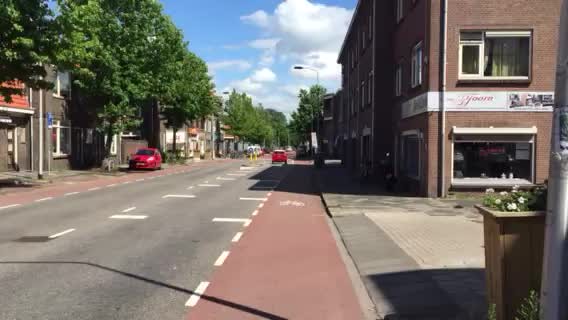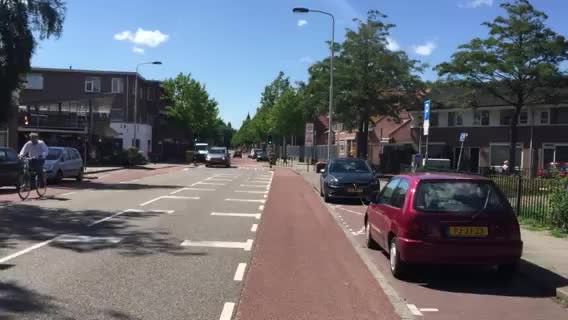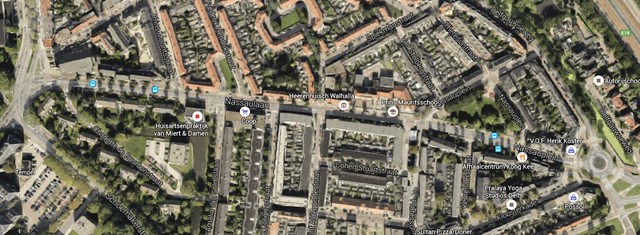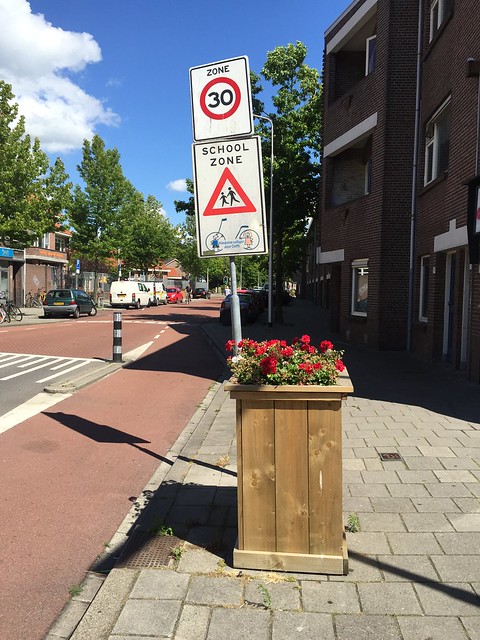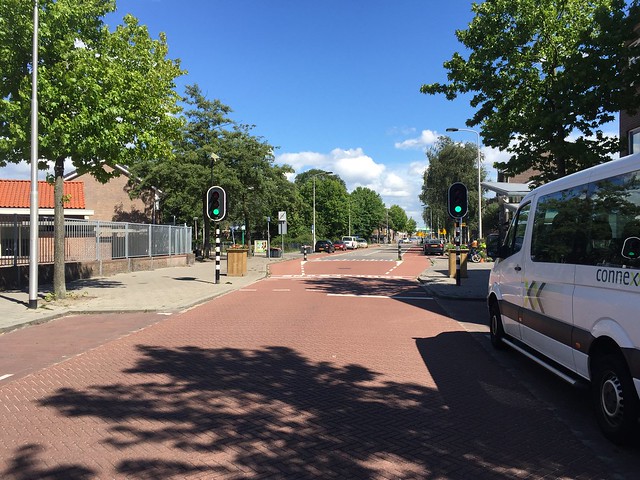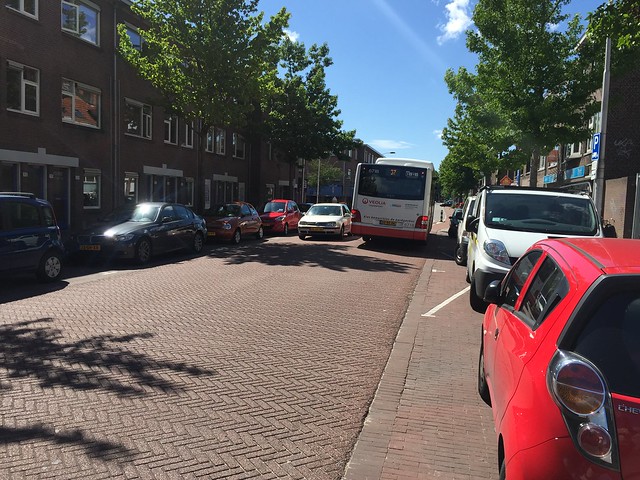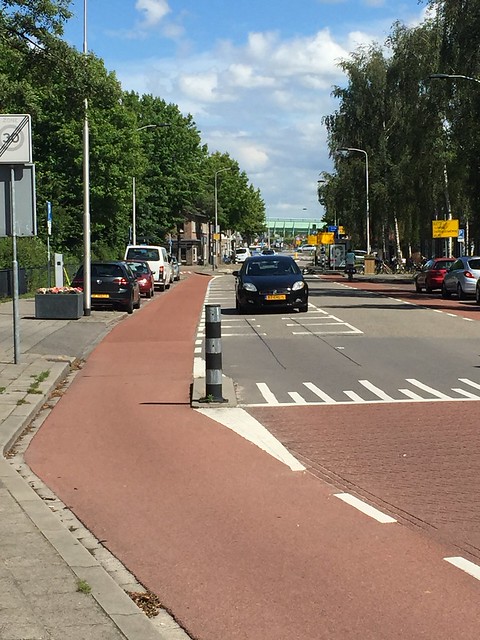Nassaulaan (Tyler Wong)
Overview
Nassaulaan is a 50kph two lane road in southeastern Delft. The road connects Julianalaan and Schoemakerstraat to the N473. The Prins Mauritsschool is halfway down the road, so there is focus to slow traffic and make it safer for children. In order to slow cars the roadway incorporates many visual and alignment changes to differentiate the space. The sustainable safety principles that are used include functionality, recognizability, and homogeneity.
Videos
The following two videos give the viewer a perspective of the bicyclist going through a school zone. Approaching the zone, notice the hatched pavement marking on the vehicle lane followed by the gateway treatment including flowers, narrowing of the road, raised table, and signage. In the school zone notice the change in pavement type and lack of center line.
Eastbound
Westbound
Functionality
Overview of Nassaulaan and Nassauplein
The functional classification for the majority of Nassaulaan is a collector road but it does include some local road tendencies. Along Nassaulaan and Nassauplein, there are 11 side streets branching off. Parking and housing are present on both sides of the road and there are schools and shops abuting the road. The road is a two lane roadway with a center line and includes bike lanes and parking on both sides. The road is designated as a 50kph road. Through the school zone, the functionality becomes a local road and the speed limit is reduced to 30kph. The access to the school by children and parents takes priority over the through traffic and reducing speeds becomes a priority. The center line and bike lanes are removed and the paving turns to brick and is elevated, making the road a shared space. The road is also narrowed in the area, which slows cars and traffic. To further slow traffic gateway treatments are implemented on both sides of the zone including a raised table, road narrowing and signage.
Recognizability
Differentiating the look of the school zone creates the recognizability for public. The change in pavement color to red along the entire width of the roadway is a big change for the roadway. At the beginning and end of the zone the signage and gateway treatments show the change. The gateway treatment includes a raised table, traffic calming to narrow the lanes, flower boxes, and pavement markings. On the west side, the gateway treatment also includes a signalized pedestrian crossing. Leading up to the school zone from both sides, the pavement marking includes hatching in the lane to alert drivers of the upcoming change.
Flower boxes and signs give extra emphasis to the start of the school zone
Signalized pedestrian crossing makes crossing safer in addition to the red brick that denotes the shared space.
Hatching leading up to the school zone alerts drivers of the oncoming change in road use
Homogeneity
The sustainable safety principle of homogeneity is achieved in this area by slowing the vehicles. Approaching the school zone, the bike lane and vehicle lanes change into a shared space, with brick paving and no center line. Homogeneity in this case is followed by slowing cars to a speed similar to bikes, allowing the two modes to mix. Pedestrians are kept separated from the other roadway users by parked cars and trees as the most vulnerable users. The transition into the school zone does include a separate cycle area from the cars, that allows bicyclists to circumvent the raised table and maintain speed.
The lack of median line makes cars and buses slow down, while still accommodating vehicles passing
Separating the bicyclists and drivers at the entrance protects bicyclists and allows them to circumvent the raised table and maintain speed
American Counterpart
The combination of these sustainable safety principles makes the roadway one where users are aware of the intended function and shows a physical change in roadway design. For reference in America, school zones have little design changes and can be as basic as pavement marking noting “school zone.”
School zone in Boston, MA near the Boston Latin School.
